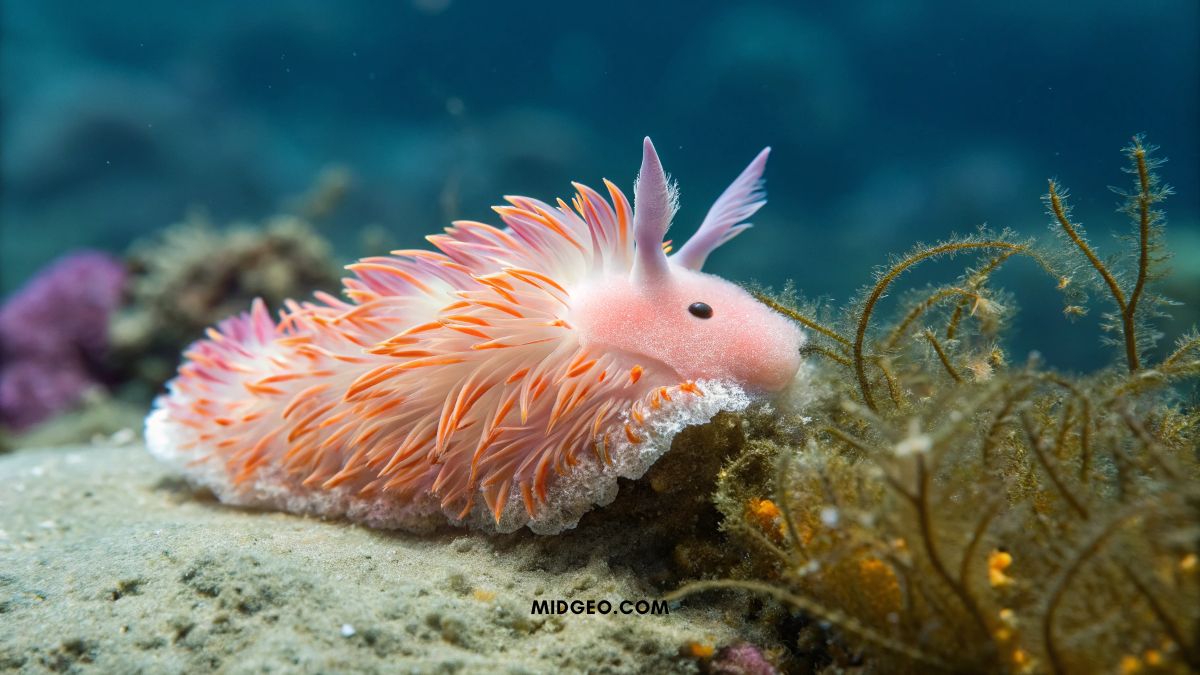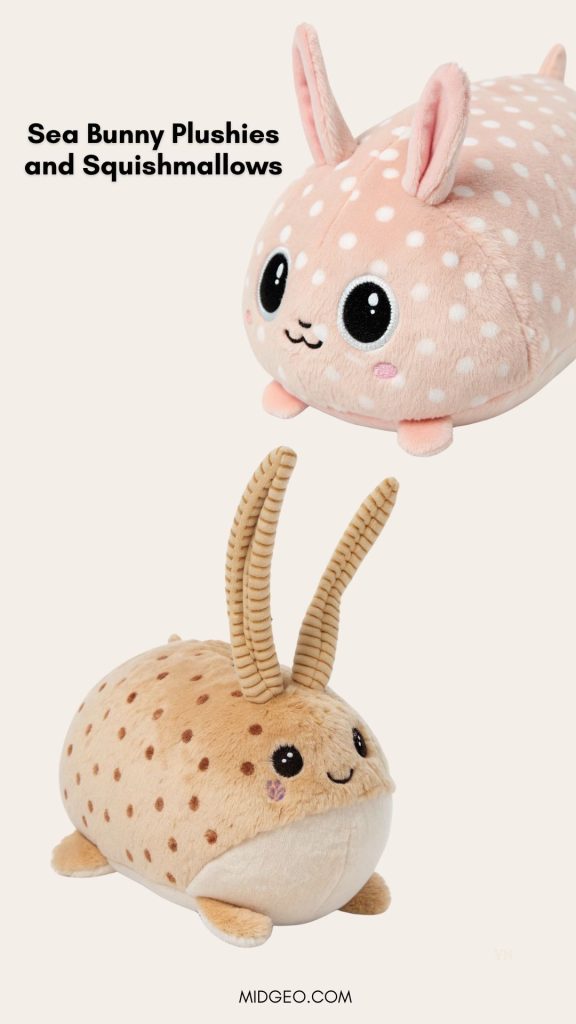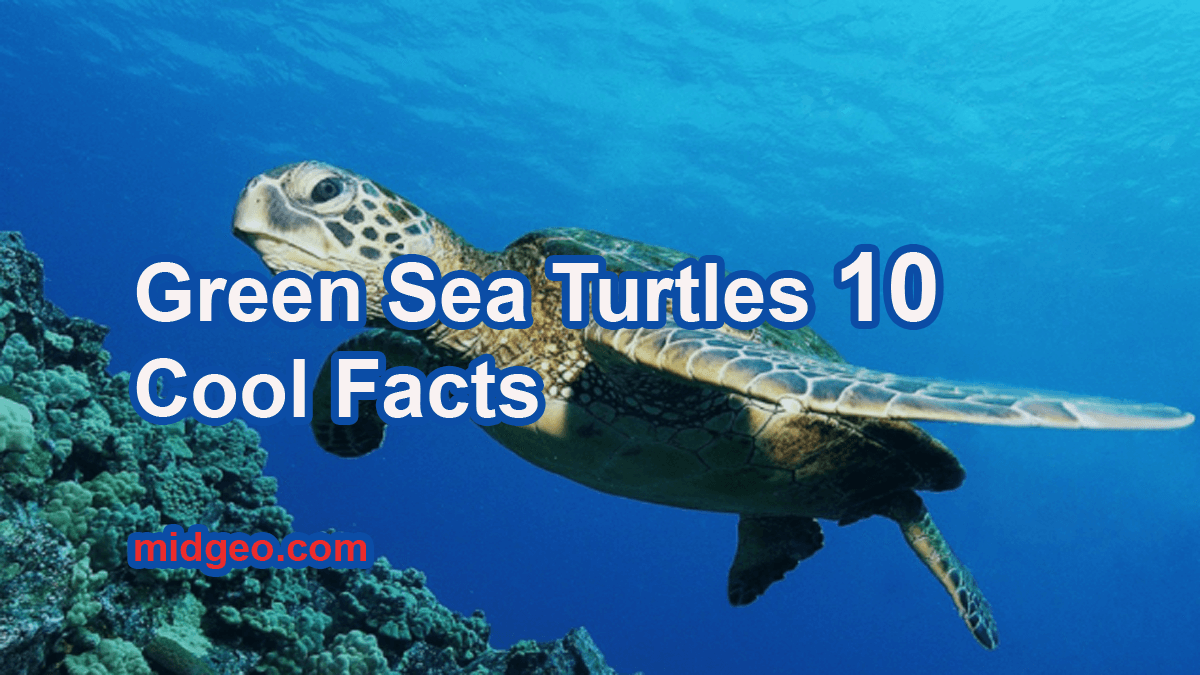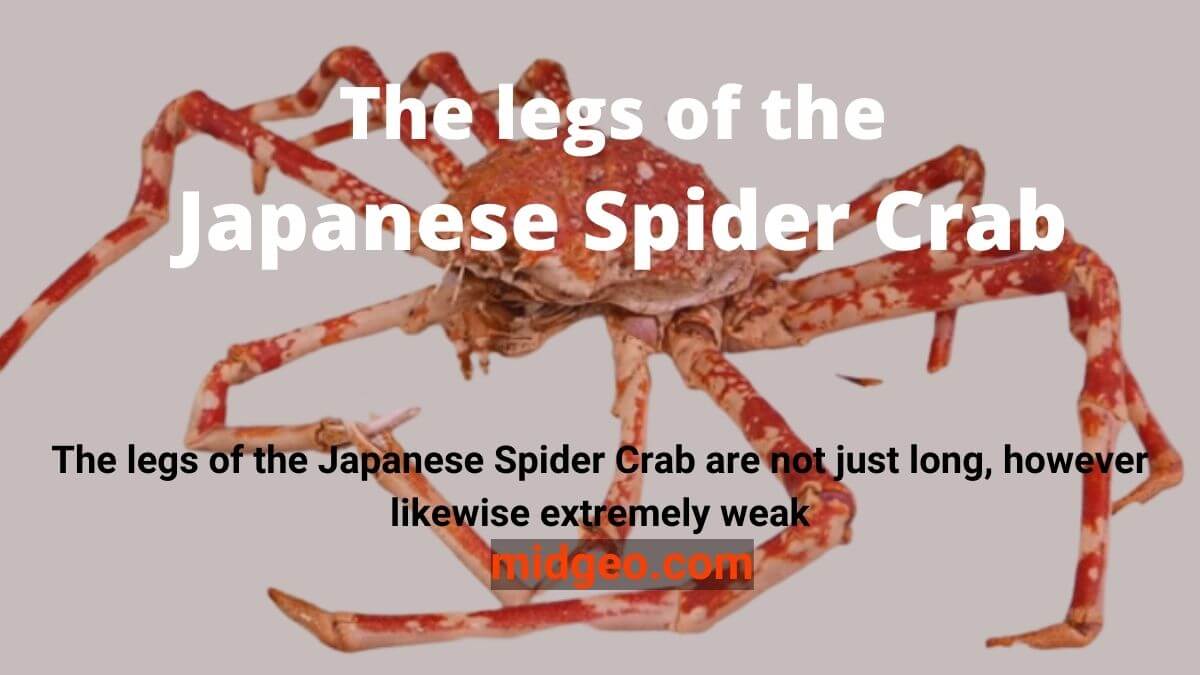Sea Bunny Slug Facts & Cute Secrets: Discover the Tiny Ocean Creatures That Look Like Fluffy Rabbits

Imagine spotting a tiny, fluffy-looking creature drifting gracefully across the ocean floor—it looks like a rabbit, but it’s not. Meet the Sea Bunny Slug, one of the ocean’s most enchanting surprises. With its fur-like texture, bunny-like “ears,” and miniature size, this marine nudibranch has charmed nature lovers, divers, and even toy designers worldwide.
In this guide, we’ll uncover everything you’ve ever wanted to know about these adorable sea slugs. You’ll discover fun sea bunny facts, like why their “fluff” isn’t really fur, how their “ears” help them survive, and where you can actually spot them in the wild. We’ll also explore their habitat, size, and unique defenses that keep predators away.
And because real sea bunnies can’t be kept as pets, we’ll introduce delightful alternatives—like Sea Bunny plushies and Squishmallows—so you can still bring their charm into your home. Get ready to fall in love with one of the world’s cutest (and most fascinating) ocean creatures!
What Exactly Is a Sea Bunny Slug?
The Sea Bunny Slug (Jorunna parva) is a type of nudibranch, a soft-bodied marine mollusk best known for its vivid colors and unusual forms. What makes this tiny nudibranch so famous is its remarkable resemblance to a fluffy bunny rabbit.
Instead of fur, their “fluff” is created by clusters of tiny sensory rods called caryophyllidia. These help them detect subtle movements in the water while giving them that plush, cotton-ball look. Their “ears” are actually rhinophores—special organs that sense chemicals in the water, much like a nose does on land animals.
So while they aren’t mammals and definitely not rabbits, their cute disguise makes them stand out as one of the most beloved cute sea creatures on the internet.
Related Article: What Exactly Is an Amazing Sea Bunny Slug?
Sea Bunny Slug Size: How Tiny Are They?
When you picture a bunny, you might imagine something soft and cuddly you can hold in your arms. But here’s the surprising truth: sea bunnies are incredibly small—most only measure 2–3 centimeters in length (less than an inch!).
Despite their miniature size, their fuzzy appearance and striking features make them look larger than life in underwater photography. Divers often zoom in with macro lenses to capture their details, which makes them appear bigger online than they really are.
This small stature is part of their charm—nature packed an adorable bunny look into a creature smaller than a fingernail.
Where Do Sea Bunnies Live?
Natural Habitat
Sea bunnies thrive in the Indo-Pacific region, where warm tropical waters provide the perfect environment. They can be spotted in:
- Coastal waters of Japan (where they were first photographed)
- Philippines and Indonesia (hotspots for nudibranch diversity)
- Papua New Guinea
- Australia’s Great Barrier Reef
They prefer shallow coral reefs and rocky seabeds, often clinging to surfaces where their favorite food—sponges—grows in abundance.
Why You Won’t See Them Everywhere
Unlike fish that migrate widely, sea bunnies are slow-moving creatures with short lifespans. They don’t live in North American or European waters, making them a rare sight outside of their native range. This exclusivity adds to their exotic appeal.
Sea Bunny Diet: What Do They Eat?
Sea bunnies are specialized sponge feeders. They scrape tiny amounts of sponge tissue using a radula, a tongue-like structure lined with microscopic teeth.
Here’s what makes this diet extra fascinating:
- The sponges they eat contain toxic compounds.
- Instead of being poisoned, sea bunnies absorb these chemicals and store them in their own tissues.
- This makes them toxic to predators, much like how poison dart frogs become poisonous through their diet.
So, their cuteness hides a serious survival advantage: their bodies are tiny chemical defense systems.
Why Do Sea Bunnies Look Like Rabbits?
Sea bunnies weren’t “designed” to look cute—they simply evolved features that ended up resembling a bunny. Let’s break it down:
- “Fur” Effect → Their fluffy coat comes from caryophyllidia, sensory papillae that detect movement.
- “Ears” → Their long black protrusions are rhinophores, which function like noses, helping them smell chemicals in the water.
- “Tail-like shape” → Their rounded body completes the illusion of a rabbit sitting still.
In reality, these traits aren’t for style—they’re for survival in a complex underwater ecosystem. But for us, the resemblance is charming enough to make them viral stars.
Life Cycle and Lifespan of a Sea Bunny
One bittersweet fact about sea bunnies is their short lifespan. Most live only a few months up to one year.
- Egg Stage: Sea bunnies begin as tiny eggs laid in delicate spirals on reef surfaces.
- Larvae: After hatching, they float in planktonic form before settling down on reefs.
- Adulthood: Once mature, they develop their full “bunny-like” appearance.
Their fleeting existence makes spotting one in the wild extra special—it’s like catching a glimpse of a rare, magical creature before it disappears.
Are Sea Bunnies Dangerous?
Sea bunnies are not dangerous to humans directly—you can’t be stung or bitten. But their toxic tissues make them unsafe to eat.
Here’s what you should know:
- They store sponge toxins in their bodies.
- These toxins make them distasteful or harmful to predators.
- While divers admire them, no one eats them—and for good reason.
In short: adorable to watch, but definitely not dinner.
Can Sea Bunnies Be Pets?
As irresistible as they are, sea bunnies cannot be kept as pets. Here’s why:
- They require a diet of specific toxic sponges that are almost impossible to replicate in captivity.
- Their lifespans are short—keeping them would mean only a few months of care.
- They are fragile and sensitive to changes in water temperature, pH, and pollution.
For ocean lovers, the best way to “keep” a sea bunny is through plush toys, Squishmallows, art, or photos.
Sea Bunny Slug vs. Real Rabbits
It’s easy to get swept up in their similarities, but sea bunnies and real rabbits are worlds apart.
| Feature | Sea Bunny Slug | Rabbit |
| Body Type | Soft-bodied mollusk | Mammal with fur and skeleton |
| Respiration | Breathes underwater via gills | Breathes air via lungs |
| Size | 2–3 cm | 20–50 cm (average) |
| Lifespan | Months to 1 year | 5–10 years (domestic) |
| “Ears” | Rhinophores (chemical sensors) | Hearing organs |
Their only real connection is in appearance—and that’s what makes them so fascinating.
Fun Sea Bunny Facts You Didn’t Know
- 🐇 First made famous in Japan: Photos of sea bunnies went viral around 2015, making them internet sensations.
- 🌊 They glow under macro lenses: Their textures and colors pop in underwater photography, making them look almost unreal.
- 🧪 They are bio-defense masters: Their sponge diet arms them with powerful toxins.
- 🐌 Part of the nudibranch family: They belong to a group with over 3,000 colorful species.
- ✨ They inspire merchandise: From plushies to keychains, sea bunny designs are popular among marine-life lovers.
Sea Bunny Plushies and Squishmallows

Since real sea bunnies aren’t pet material, many fans turn to plush toys and Squishmallows.
- Sea Bunny Plush: Soft, fluffy replicas that mimic their ocean cuteness—perfect for collectors or kids.
- Sea Bunny Squishmallow: A squishy, huggable version designed for stress relief and cozy comfort.
These alternatives let people “adopt” their own sea bunny without harming wild populations.
Why Sea Bunnies Became Internet Stars
The rise of the sea bunny slug on social media can be traced back to divers and marine photographers. Once macro images of them surfaced online, their resemblance to tiny rabbits spread like wildfire.
- Cute factor: They combine the appeal of a rabbit with the mystery of ocean life.
- Shareability: Their photos are instantly eye-catching and meme-worthy.
- Scarcity: Since they’re rare in the wild, they feel exotic and special.
Today, sea bunnies remain a favorite among marine enthusiasts and casual fans alike.
Frequently Asked Questions (FAQs)
Q: Do sea bunnies really have eyes?
Yes, but they’re very simple. They can only sense light and dark, not detailed images.
Q: Are sea bunnies related to rabbits?
No. Rabbits are mammals, while sea bunnies are nudibranch mollusks.
Q: Where can I see a sea bunny in the wild?
They’re most commonly spotted in Japan, the Philippines, Indonesia, and Australia.
Q: Can sea bunnies survive in an aquarium?
Not realistically. Their specialized diet and short lifespan make them unsuitable for captivity.
Q: Are sea bunnies poisonous to touch?
Not typically. They’re toxic when eaten, but divers who gently observe them are safe.
The Role of Sea Bunnies in Marine Ecosystems
While sea bunnies are tiny, they still play an important role:
- Controlling sponge populations → by feeding on sponges, they help maintain reef balance.
- Food web connection → though toxic to many predators, they still interact with other nudibranchs and reef organisms.
- Biodiversity ambassadors → their popularity draws attention to ocean conservation efforts.
By learning about them, people often become more invested in protecting coral reefs and marine life as a whole.
Final Thoughts,
The Sea Bunny Slug proves that the ocean is full of small wonders that spark big curiosity. With its fluffy appearance, delicate size, and fascinating survival tricks, this creature blends science and whimsy in a way few animals can. While you can’t bring one home as a pet, you can celebrate their magic through art, plushies, or simply learning more about their role in the sea.
Whether you’re a diver, a marine life enthusiast, or just someone who loves cute sea creatures, sea bunnies remind us that nature is both beautiful and surprising. Best of all, appreciating them doesn’t require a huge budget or special equipment—just curiosity and wonder.
So next time you see a Sea Bunny Slug pop up in your feed, you’ll know exactly what makes it so special. 🌊🐇





